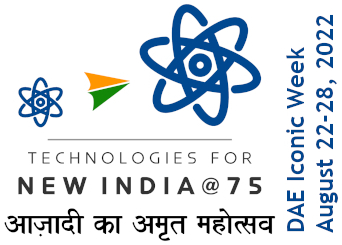Biographical Memoirs :: MEGHNAD SAHA
Saha's greatest contribution is, undoubtedly, the theory of high - temperature ionization and its application to stellar atmospheres. The equation that goes by his name was first given in the paper `On ionization in the solar chromosphere', published in the Philosophical Magazine for October 1920. Using the language of physical chemistry he called it the `equation of the reaction-isobar for ionization'.
Discussing the case of the ionization of calcium, he wrote:
`We may regard the ionization of calcium atom as taking place according to the following scheme, familiar in physical chemistry,

where Ca is the normal atom of calcium (in the vapour state), Ca+ is an atom which has lost one electron, U is the quantity of energy liberated in the process. The quantity considered, is 1 g atom ... To calculate the "Reaction-isobar" K, let us assume that P is the total pressure, and a fraction x of the Ca-atom is ionized.
Then we have

This is the equation of the "reaction-isobar" which is throughout employed for calculating the "electron-affinity" of the ionized atom.' The value 6.5 in the above expression is the value of the Chemical constant obtained from the Sackur-Tetrode-Stern relation.
It is pertinent to remark that the ionization theory was formulated by Saha, working by himself in Calcutta, and the paper quoted above was communicated by him from Calcutta to the Philosophical Magazine -- incorrectly, statements to the contrary have sometimes been made. (Saha's first visit to Europe was made a couple of months later. ) Further papers soon followed. It is not too much to say that the theory of thermal ionization introduced a new epoch in astrophysics by providing for the first time, on the basis of simple thermodynamic considerations and elementary concepts of the quantum theory, a straightforward interpretation of the different classes of stellar spectra in terms of the physical conditions (temperature and to a lesser extent pressure) prevailing in the stellar atmospheres. S. Rosseland in the Introduction to his well-known `Theoretical astrophysics' (Oxford University Press, 1936) has observed: `Although Bohr must thus be considered the pioneer in the field, it was the Indian physicist Meghnad Saha who (1920) first attempted to develop a consistent theory of the spectral sequence of the stars from the point of view of atomic theory. Saha's work is in fact the theoretical formulation of Lockyer's view along modern lines, and from that time the idea that the spectral sequence indicates a progressive transmutation of the elements has been definitely abandoned. From that time dates the hope that a thorough analysis of stellar spectra will afford complete information about the state of the stellar atmospheres, not only as regards the chemical composition, but also as regards the temperature and various deviations from a state of thermal equilibrium, the density distribution of the various elements, the value of gravity in the atmosphere and its state of motion. The impetus given to astrophysics by Saha's work can scarcely be overestimated, as nearly all later progress in this field has been influenced by it and much of the subsequent work has the character of refinements of Saha's ideas.'




